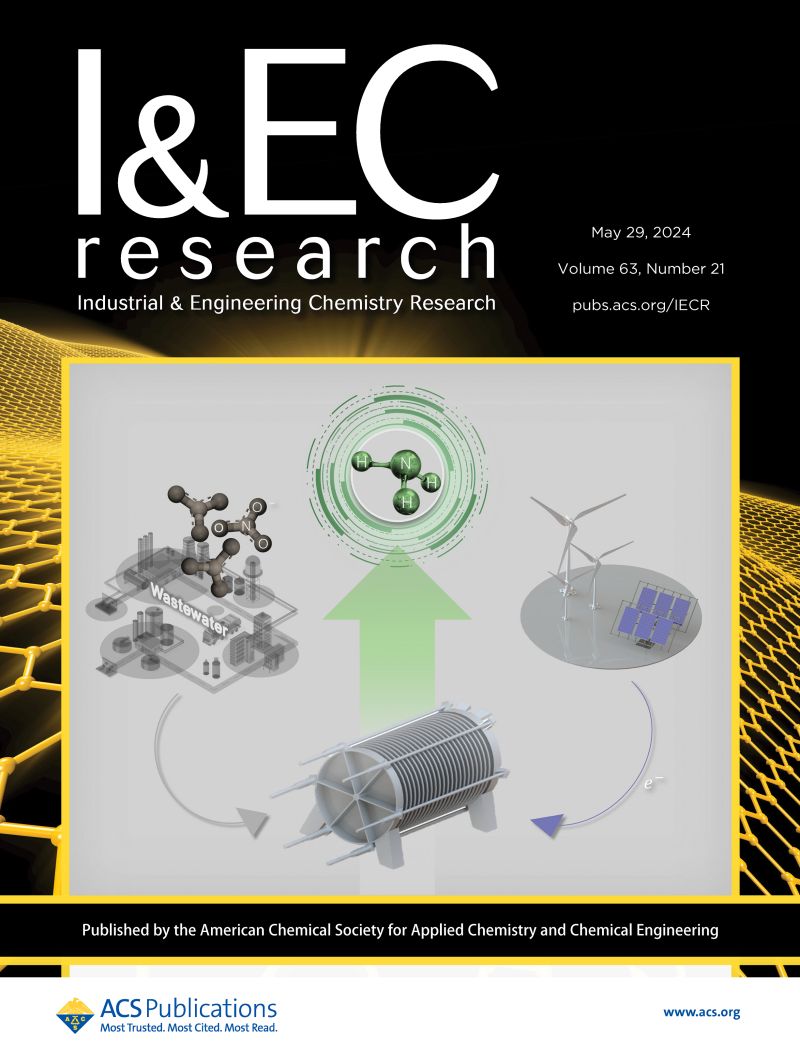废塑料和生物质热解和共裂解产生的焦油和油的分析
IF 3.8
3区 工程技术
Q2 ENGINEERING, CHEMICAL
引用次数: 0
摘要
热解已被提出作为一种潜在的技术来管理世界范围内不断增长的塑料垃圾。塑料废弃物与生物质共热解是一种很有前途的燃料和化工产品生产技术。然而,这个过程会产生焦油作为废物。这种焦油的化学性质还有待彻底分析。本研究采用气相色谱-质谱(GC-MS)、傅里叶变换红外光谱(FTIR)和热重分析(TGA)对纯塑料(包括高密度聚乙烯(HDPE)、低密度聚乙烯(LDPE)、聚乙烯(PE)、聚苯乙烯(PS)和塑料-生物质混合物)热解所得的油和焦油进行了分析。气相色谱-质谱分析结果显示,产物主要为C7-C37含碳烃,主要为烷烃和烯烃。FTIR数据显示了各种官能团的存在,包括醇类、醛类、酮类和羧酸类,这表明从废塑料和生物质中获得的热解和共裂解油的复杂性。TGA的数据显示,所有四种塑料中的焦油都有更高的分解率,这表明与相应的油相比,它们含有更重的碳氢化合物。这项研究将对希望推进塑料和生物质废物管理研究的研究人员感兴趣。本文章由计算机程序翻译,如有差异,请以英文原文为准。

Analysis of Tar and Oil Derived from Pyrolysis and Copyrolysis of Waste Plastics and Biomass
Pyrolysis has been proposed as a potential technology for managing the growing volume of plastic waste generated worldwide. Co-pyrolysis of plastic waste with biomass is a promising technology for generating fuel and chemical products. However, this process generates tar as a waste product. The chemical properties of this tar have yet to be thoroughly analyzed. This study presents the results of gas chromatography–mass spectrometry (GC–MS), Fourier-transform infrared spectroscopy (FTIR), and thermogravimetric analysis (TGA) of oil and tar obtained from the pyrolysis of pure plastics including high-density polyethylene (HDPE), low-density polyethylene (LDPE), polyethylene (PE), polystyrene (PS), and plastic-biomass mixtures. GC–MS analysis revealed the presence of C7–C37 carbon-containing hydrocarbons, which include alkanes and alkenes as the dominant products. FTIR data revealed the presence of various functional groups, including alcohols, aldehydes, ketones, and carboxylic acids, indicating the complexity of the pyrolysis and copyrolysis oil obtained from waste plastics and biomass. TGA data show that tar from all four plastics has a higher decomposition rate, suggesting the presence of heavier hydrocarbons compared with their corresponding oils. This research will be of interest to researchers looking to advance the study of plastic and biomass waste management.
求助全文
通过发布文献求助,成功后即可免费获取论文全文。
去求助
来源期刊

Industrial & Engineering Chemistry Research
工程技术-工程:化工
CiteScore
7.40
自引率
7.10%
发文量
1467
审稿时长
2.8 months
期刊介绍:
ndustrial & Engineering Chemistry, with variations in title and format, has been published since 1909 by the American Chemical Society. Industrial & Engineering Chemistry Research is a weekly publication that reports industrial and academic research in the broad fields of applied chemistry and chemical engineering with special focus on fundamentals, processes, and products.
 求助内容:
求助内容: 应助结果提醒方式:
应助结果提醒方式:


